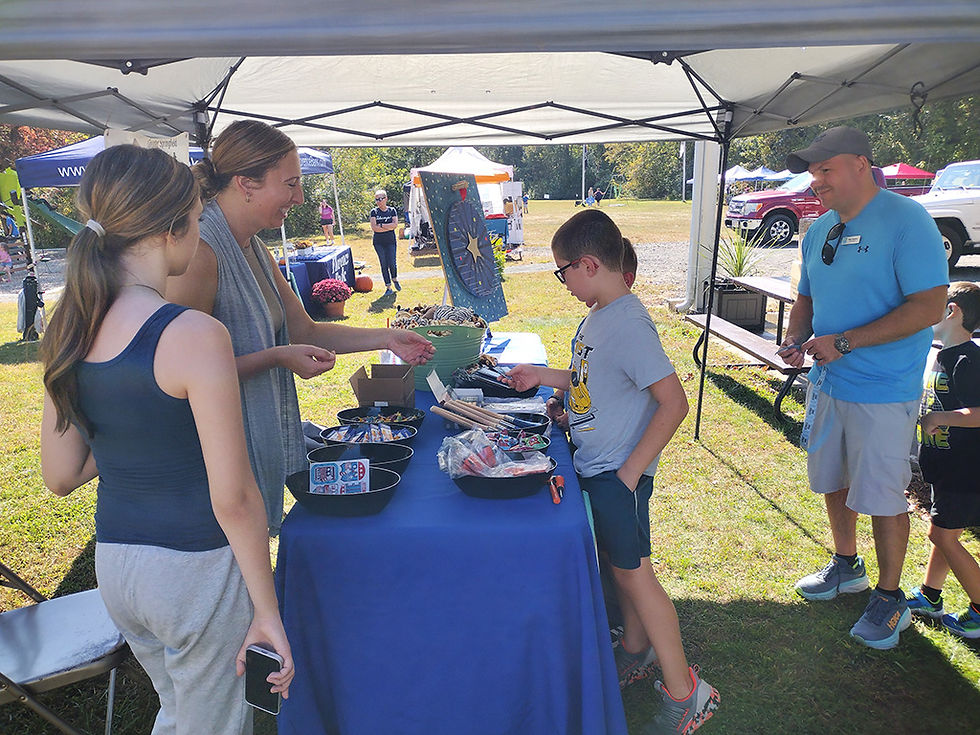Habitat begins ICF build
- Greater Springfield Habitat for Humanity

- Nov 15, 2022
- 2 min read
Construction on Greater Springfield Habitat for Humanity’s (GSHFH) newest home is taking shape and it’s noticeably different than neighboring and previously built homes. The four-bedroom, two-bathroom Chestnut Street house in Holyoke will be built using insulated concrete forms (ICF) instead of traditional wood framing and sheathing. The project is a collaboration between the National Ready Mixed Concrete Association and Habitat for Humanity International to build 50 ICF homes across the country.

“We are very excited to have been selected to be a part of the ‘Build with Strength’ partnership,” said Aimee Giroux, GSHFH executive director.
Habitat will utilize ICF blocks manufactured by Integraspec, which consist of 2-inch foam panels that are separated by spacers. The blocks are stacked together much like children’s plastic building blocks. Once assembled, concrete is poured between the foam panels. The 6-inch concrete core along with the foam panels create a super insulated and resilient home. The panels will be used for all of the exterior walls from the foundation to the second story.
“I like it,” said Sheri L. Green, GSHFH Construction manager. “I’m very excited about it. It’s volunteer-friendly with the right training, and it’s going to be great.”
David Stevens, a carpentry teacher at Roger J. Putnam Vocational Technical Academy in Springfield who admitted he’d never seen an ICF build in person, agreed.
“It’s cool,” he said. “No tornado will take it down.”
Because the foam panels are supported by concrete, experts have said the ICF doesn’t break down, collapse, and can withstand high winds from hurricanes and tornadoes, seismic activity, and fire.
ICF offers several additional benefits to the builder and homeowner. For starters, the foam panels are made from recycled material. ICF walls do not off-gas, whereas conventional walls sheathed with oriented strand board (OSB) off-gas through glues and resin. ICF walls are resistant to mold, moisture, and rot, which provides a better living environment for those suffering from allergens or asthma. Also, due to the rising cost of lumber, this method significantly reduces the need for wood for framing and sheathing the exterior, meaning less trees are cut down.
Since an ICF house has foam on both sides of the concrete, they provide increased thermal mass. This means wall temperatures won’t change throughout a day because they eliminate the gaps in regular construction that can cause cold spots. It’ll cost less to heat and cool the home, which leads to energy savings typically sparing a homeowner 30-70% on heating, cooling, and dehumidification expenses. Also, foam and concrete walls insulate sound better than wood-framed walls. An ICF home will likely be quieter than a traditional house.
As with any new building method there are learning curves, Aimee said.
The square footage of the home will need to be adjusted to accommodate the increase in wall thickness. Measurements for doors, windows, and utilities have to be exact. Once the concrete is poured, fixing errors may prove difficult.
“If you would like to be a part of learning this new building method with us, come out and volunteer with us on site,” Aimee said.
To volunteer, go to habitatspringfield.org/volunteer



Comments